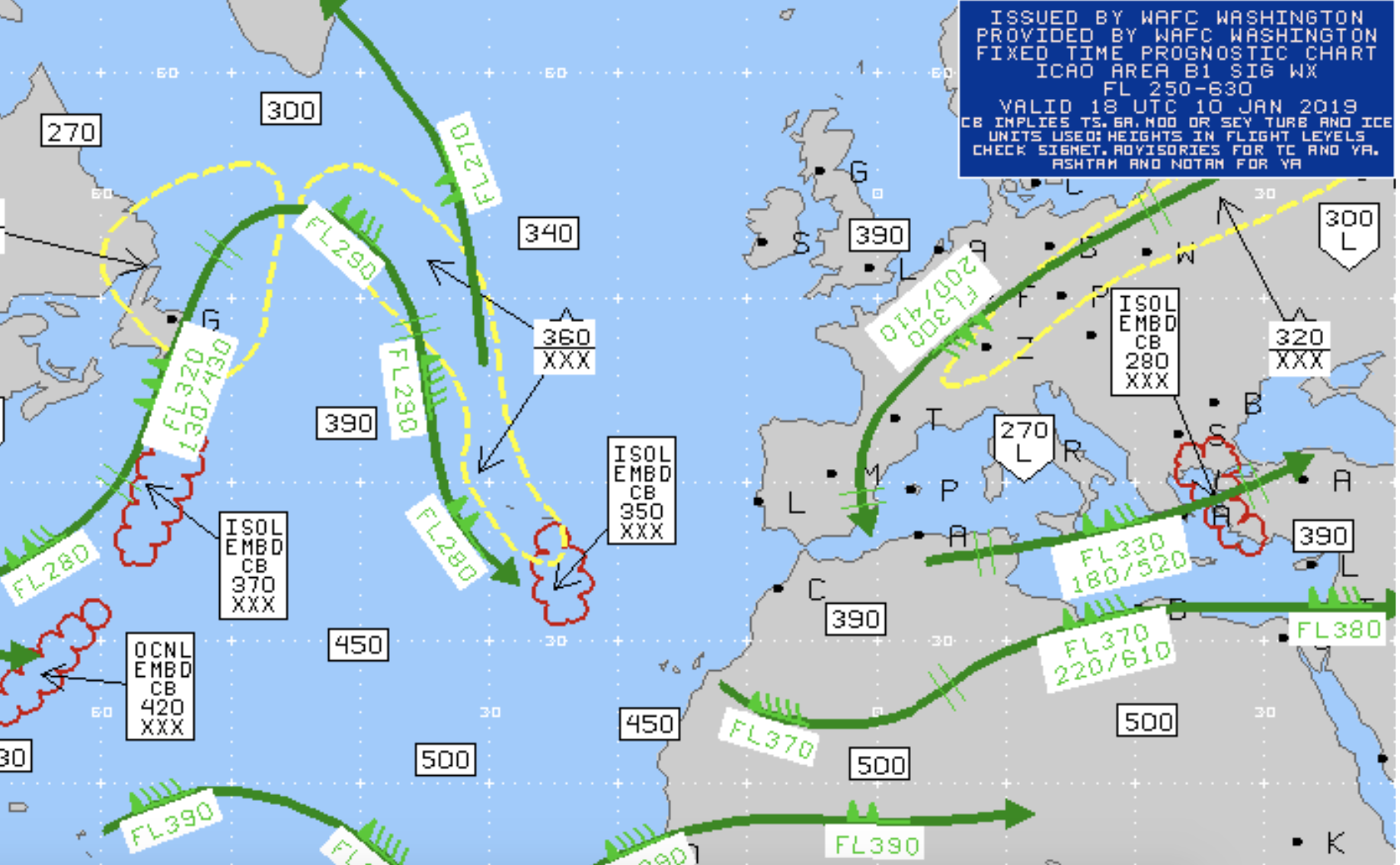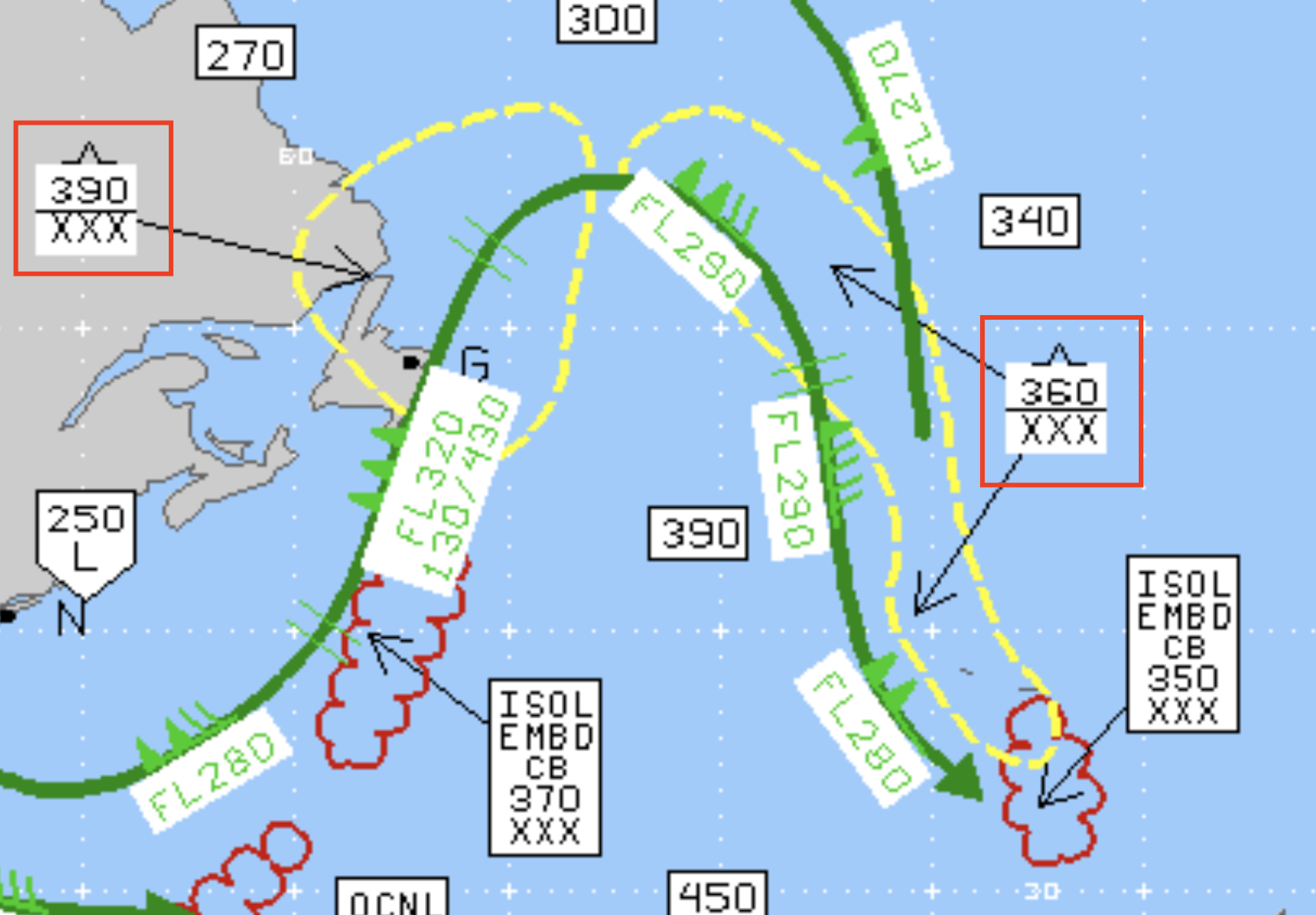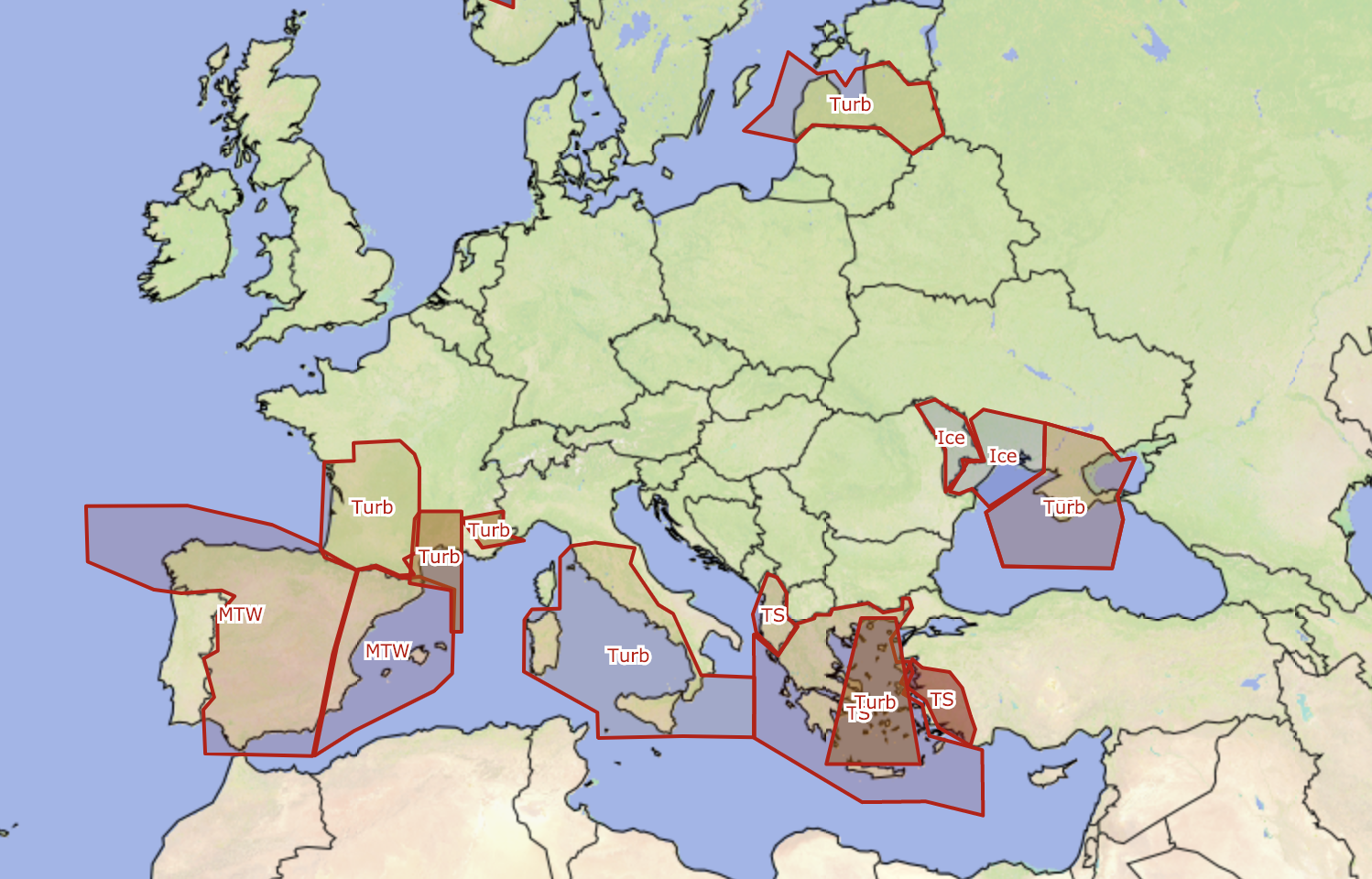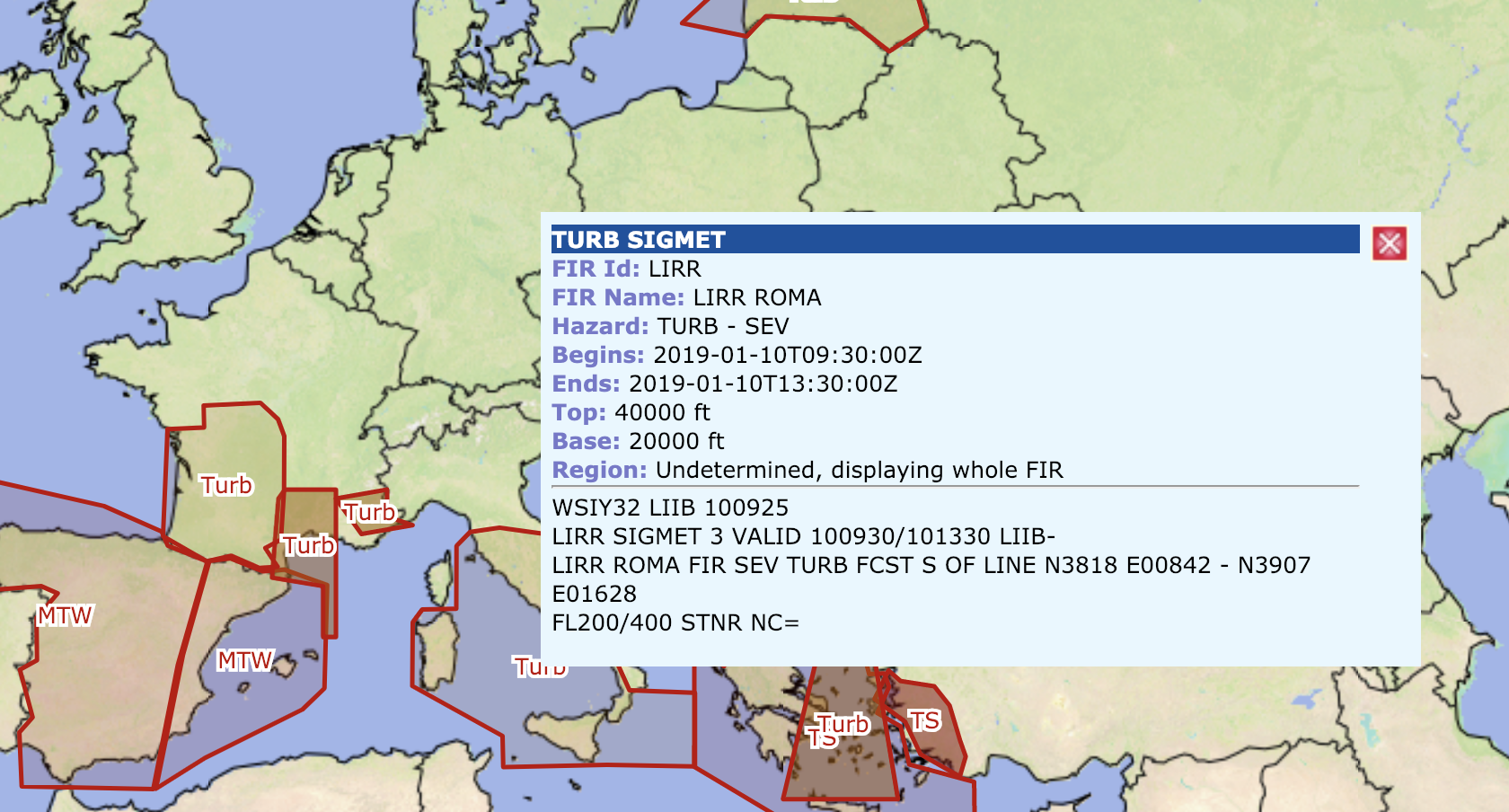¶ Introduction
Atmosphere is a very unstable mass of air. Think of turbulence as of disturbed or rough air. Sometimes it provokes irregular motion of an aircraft in flight.
There are different reasons for causing turbulence and also different parts of atmosphere where it occurs.
It is important to understand turbulence effects on flying airplanes and ways to avoid turbulence areas. Severe turbulence can impact the airplane leading to structural damage.
¶ Types of turbulence
Turbulence is caused by convective currents (convective turbulence), obstructions in the wind flow (mechanical turbulence), jet streams and wind shear (wind shear is covered by a separate article).
¶ Convective turbulence
Imagine today is a warm summer afternoon with a very light wind. Air mass heats from the surface and absolutely becomes an unstable layer rising upward. Because of uneven heating, the strength of heated air mass can vary within short distances. For every rising mass, there is a compensating downward mass of air. Therefore, vertical motions appear as a result of rising and sinking of air. It is called convective turbulence.
As air moves upward, it cools. When reaching a level where its temperature drops to the same of surrounding air, it saturates and forms cumulus clouds. So, this is a good sign for pilots: expect to encounter turbulence beneath or in the clouds, while above the clouds air generally is smooth.
Cumuliform clouds are usually seen over land during sunny afternoons. There is no convective turbulence over the sea.
¶ Mechanical turbulence
Mechanical turbulence is caused by physical obstructions to the normal flow of air, such as trees, coasts, buildings, mountains and so on. The intensity of mechanical turbulence depends on wind speed and roughness of the obstructions. The higher the speed and/or the rougher the surface, the greater the turbulence.
A separate form of mechanical turbulence is mountain waves. It forms when stable air flow passes over a mountain or mountain ridge. The waves may extend 1,000 km or more downwind from the mountain range. Mountain waves frequently produce severe to extreme turbulence.
¶ Clean air turbulence
Clear Air Turbulence (CAT) is a higher altitude (20,000 to 50,000 feet) turbulence mostly associated with jet streams. The turbulence will be more severe with curved jets and in mountainous areas, particularly when mountain waves are present. CAT frequency and intensity are maximized during winter when jet streams are strongest.
The best way for pilots to deal with CAT is to descend to lower altitudes, because the margins between high and low speed buffet may be quite small at higher altitudes, putting aircraft into stall.
¶ Reporting
Turbulence remains an important factor, especially above FL150. Pilots are usually expected to report turbulence using standard criteria and reporting form.
| Intensity | Aircraft reaction |
|---|---|
| Light | Slight changes in altitude and/or attitude. Slight, rapid and rhythmic bumpiness. IAS changes by 5-10 kt. Report as Light Turbulence. |
| Moderate | Like light but of greater intensity. Changes of altitude and/or attitude. IAS fluctuates 15-25 kt. Report as Moderate chop. |
| Severe | Large, abrupt changes in altitude and/or attitude. Aircraft may be momentarily out of control. Report as Severe Turbulence. |
Note: FAA also defines extreme turbulence when an aircraft is practically impossible to control and may be structurally damaged.
A standard turbulence report should state:
- Aircraft location
- Time in UTC
- Turbulence intensity
- Whether the turbulence occurred in or near clouds
- Aircraft altitude or flight level
- Type of aircraft
- Duration of turbulence if applicable.
Example: Five zero miles south of Ostrava, 1025Z, moderate chop at Flight Level three three zero, Cessna Citation.
¶ Weather advisory
Weather briefing is an important part of every flight preparation.
Pilots should become aware of any significant weather phenomena regarding the flight. Two most useful resources for turbulence zones are prognostic chart and SIGMETs.
¶ Prognostic chart
Prognostic chart is a forecast map showing the state of the atmosphere at a future time. It contains turbulence zones as well.
Here is an example of a prognostic chart issued by Washington WAFC (World Area Forecast Center).

Only moderate and severe turbulences are shown on the prognostic chart.
Turbulence is marked using the following symbols:
| Symbol | Meaning |
|---|---|
 |
Moderate turbulence |
 |
Severe turbulence |
 |
Moderate to severe turbulence in Clean Air above 10000 ft |
Areas of moderate or greater turbulence are enclosed by dashed lines.
The vertical extent of turbulence layers is specified by top and base heights in hundreds of feet and those values are pressure altitude.
Turbulence bases which extends below the layer of the chart are identified with "XXX." Top and base heights are separated by a line.

On the chart above two different turbulence zones are depicted with yellow dashed lines:
- Moderate turbulence above Newfoundland island from FL250 or below to FL390 (because "XXX" means extending the lowest layer of the chart)
- Moderate turbulence East of Newfoundland island from FL250 or below to FL360.
Always check the legend of a prognostic chart. It gives you an explanation of the information provided, valid time and date, depicted flight levels and other important information.
¶ SIGMET
SIGMET (Significant Meteorological Information) is a weather advisory that contains different meteorological information concerning the safety of all aircraft.
The criteria for turbulence to be included in SIGMET is severe or higher (for FAA classification) turbulence activity.
SIGMET information is always a text, but some weather services provide maps based on issued weather advisories such as SIGMET, AIRMET, PIREP etc.
Here is a common map view for SIGMET:

Let's pick up one of the zones and check its information:

The lower text part is a common SIGMET. Above it is an automatic decoding to the plain language provided by weather service. It's very useful, because it allows us to look at the map instead of coordinates.
¶ Impact on aircraft
Turbulence affects an aircraft in different ways.
ㅤ1. During the cruse phase of flight an aircraft tends to operate towards the top end of permitted speeds range. In turbulence conditions speed should be reduced to provide a safety margin from the dangers of overstressing the airframe and to maintain aircraft controllability and stability.
ㅤ2. Holding procedure regulations define speed limits at or below certain numbers. Those speeds are often close to the bottom end of aircraft permitted speeds range. However, regulations define holding speed restrictions under turbulence conditions which are higher, to prevent speed drop below the permitted range and stall occurance.
Good pilots always consider turbulence areas during flight planning to choose optimum speeds and flight levels.
- None
- None
- VID 531824 - Creation
- VID 496402 - Wiki.js integration